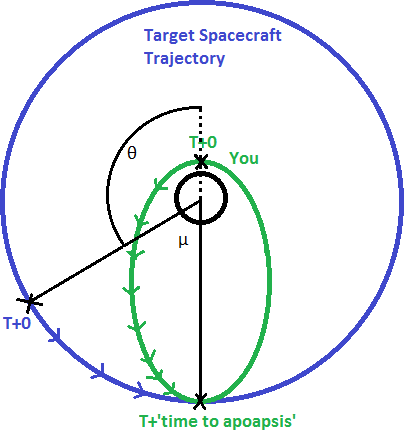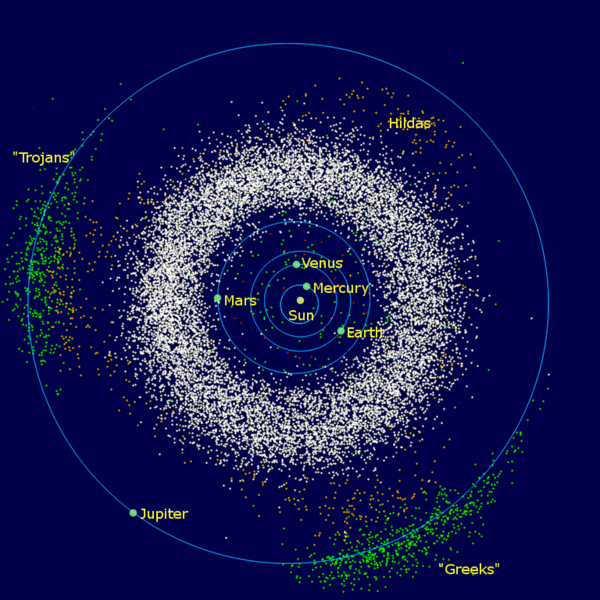Over the course of this blog series, we discussed the nature of human spaceflight as it exists today, which can be broken up into four major categories. Ascent from a planets surface, maneuvers in orbit near a planet, transfer trajectories to the moon(s) of this planet, and interplanetary transfers which can vary significantly in complexity. We will take this page to briefly recap everything that we covered here. The ascent phase is one the most critical because, as mentioned, we cannot as yet produce spacecraft in space.
The ascent phase amounts to boosting into a fast enough trajectory that you never reach the ground. In practical terms, this means leaving the atmosphere so that drag doesn't eventually slow you down and pull you down to the surface. Therefore, one of the first steps is accelerating almost directly upwards to leave the thicker parts of the atmosphere. The rocket then begins a turn which eventually leads to it burning sideways, in order to establish its trajectory. It was noted that getting to orbit quickly is efficient, because you can spend less time fighting gravity. Building up your sideways velocity is reserved for after you are most of the way out of the atmosphere so that you can build up lots of speed without burning up or being torn apart by atmospheric forces. Once you have gotten away from the atmosphere, its a free run to orbit.
Orbit itself in this context refers to the space relatively close to Earth, or whichever arbitrary planet you have picked. In general, whatever you want to do that doesn't involve orbiting some other object. We discussed the principles behind how to perform a number of maneuvers. This included raising and lowering your apoapsis and periapsis, rendezvous with another spacecraft or object, and inserting yourself into a formation. We also explained the general concept of Earth-Sun Lagrange Points. This wasn't a complete picture, but it covered a lot of the basics.
We then built on these concepts with the idea of transferring to a planet's moon. We discussed how this in many ways amounts to a rendesvous with another spacecraft. Very similar, except for the fact that as you approach the moon, its gravity begins to influence your trajectory. We talked about the fuel savings associated with a 'suicide burn', which is somewhat similar to the reasoning behind flying very fast during the ascent phase. It was also noted that inserting yourself into orbit around a moon is very similar to lowering your apoapsis during an orbital maneuver.
Next we discussed the basics of interplanetary transfers, and how they bear some resemblance to planet-moon transfers. There was the idea of an escape trajectory, and how that in its barest form amounts to a co-orbit with the Earth. Once in a co-orbit, you can essentially transfer to any planet in the system as if you were transferring to one of the Earth's moons. In this case, one of the Sun's moons. We noted how the point where you start your transfer burn could be seen as your launch window, and the ideal time to start your mission if you want to avoid months waiting around in space. Finally, it was noted that settling into the orbit of another planet is very similar to settling into the orbit of a moon.
Finally, we discussed some of the more advanced techniques that could be used to achieve interplanetary transfers. You can achieve orbit, or even a direct landing via aerobraking, where you intentionally descend into a planets atmosphere in order to slow yourself with the air drag. Gravity assists were explained, although not as rigorously as previous concepts. Lastly, we roughly characterized a continuous thrust trajectory, as well as why they exist.
All of these concepts combined give you a rough picture of what human spaceflight looks like today. We launch our craft into orbit from the surface, and then perform various missions. Perhaps we want to fly to the international space station, or build a constellation of sattelites. Alternatively, we may want to fly to the Moon and insert ourselves into orbit, perhaps deploying landers. Lastly, we may want to travel to another planet in our solar system. There are many techniques we can use to make this cheaper. This has been a long time hobby of mine, and I learned a lot while studying in order to write these blog posts. I enjoyed making them, and hope you enjoyed reading them, at least to some degree.
The ascent phase amounts to boosting into a fast enough trajectory that you never reach the ground. In practical terms, this means leaving the atmosphere so that drag doesn't eventually slow you down and pull you down to the surface. Therefore, one of the first steps is accelerating almost directly upwards to leave the thicker parts of the atmosphere. The rocket then begins a turn which eventually leads to it burning sideways, in order to establish its trajectory. It was noted that getting to orbit quickly is efficient, because you can spend less time fighting gravity. Building up your sideways velocity is reserved for after you are most of the way out of the atmosphere so that you can build up lots of speed without burning up or being torn apart by atmospheric forces. Once you have gotten away from the atmosphere, its a free run to orbit.
Orbit itself in this context refers to the space relatively close to Earth, or whichever arbitrary planet you have picked. In general, whatever you want to do that doesn't involve orbiting some other object. We discussed the principles behind how to perform a number of maneuvers. This included raising and lowering your apoapsis and periapsis, rendezvous with another spacecraft or object, and inserting yourself into a formation. We also explained the general concept of Earth-Sun Lagrange Points. This wasn't a complete picture, but it covered a lot of the basics.
We then built on these concepts with the idea of transferring to a planet's moon. We discussed how this in many ways amounts to a rendesvous with another spacecraft. Very similar, except for the fact that as you approach the moon, its gravity begins to influence your trajectory. We talked about the fuel savings associated with a 'suicide burn', which is somewhat similar to the reasoning behind flying very fast during the ascent phase. It was also noted that inserting yourself into orbit around a moon is very similar to lowering your apoapsis during an orbital maneuver.
Next we discussed the basics of interplanetary transfers, and how they bear some resemblance to planet-moon transfers. There was the idea of an escape trajectory, and how that in its barest form amounts to a co-orbit with the Earth. Once in a co-orbit, you can essentially transfer to any planet in the system as if you were transferring to one of the Earth's moons. In this case, one of the Sun's moons. We noted how the point where you start your transfer burn could be seen as your launch window, and the ideal time to start your mission if you want to avoid months waiting around in space. Finally, it was noted that settling into the orbit of another planet is very similar to settling into the orbit of a moon.
Finally, we discussed some of the more advanced techniques that could be used to achieve interplanetary transfers. You can achieve orbit, or even a direct landing via aerobraking, where you intentionally descend into a planets atmosphere in order to slow yourself with the air drag. Gravity assists were explained, although not as rigorously as previous concepts. Lastly, we roughly characterized a continuous thrust trajectory, as well as why they exist.
All of these concepts combined give you a rough picture of what human spaceflight looks like today. We launch our craft into orbit from the surface, and then perform various missions. Perhaps we want to fly to the international space station, or build a constellation of sattelites. Alternatively, we may want to fly to the Moon and insert ourselves into orbit, perhaps deploying landers. Lastly, we may want to travel to another planet in our solar system. There are many techniques we can use to make this cheaper. This has been a long time hobby of mine, and I learned a lot while studying in order to write these blog posts. I enjoyed making them, and hope you enjoyed reading them, at least to some degree.






